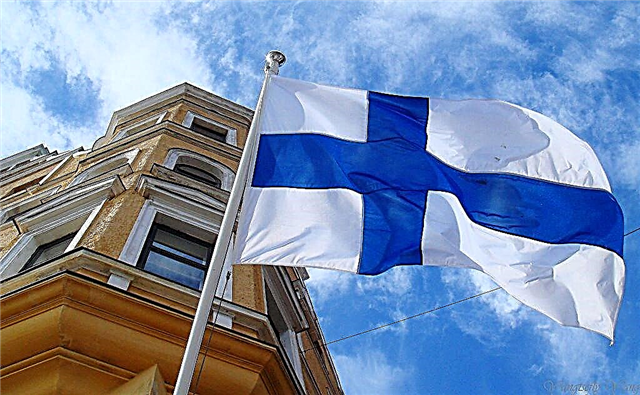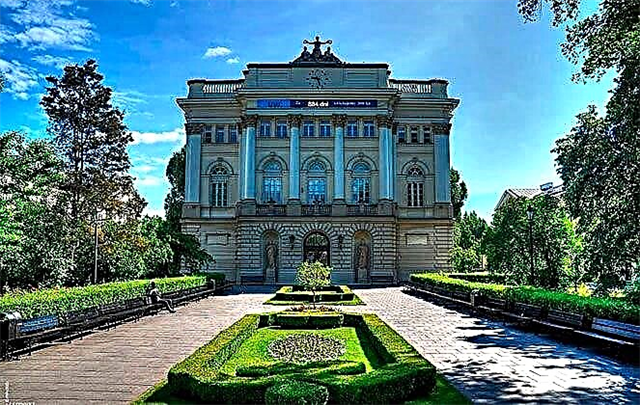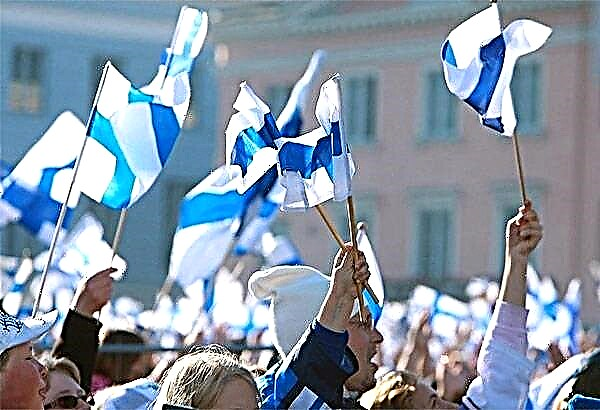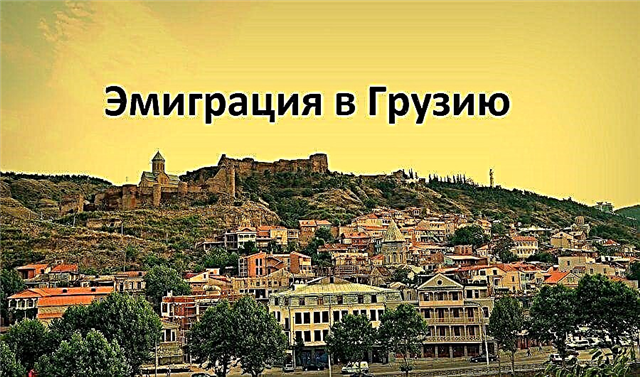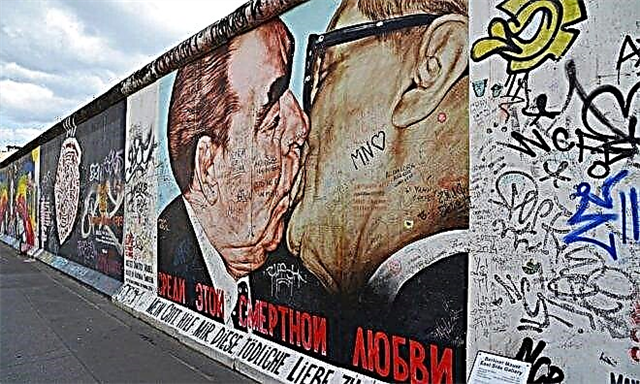The Berlin Wall is the most iconic border fortification in the history of the 20th century. This fence has become a symbol of the division of the two worlds and the split of Europe into opposing political blocs. To this day, the ghost of the Berlin Wall haunts the world.

What led to the emergence of the Berlin Wall
The construction of the Berlin Wall is a direct consequence of the global confrontation that began after World War II. This confrontation is known to the public as the Cold War. Consider how the events unfolded that led to the construction of the Berlin Wall.
- 1945 - After the defeat of Nazi Germany, Berlin was divided into four zones of occupation. The eastern zone was controlled by the Soviet Union, and the three western ones were controlled by Great Britain, the USA and France.
- June 1948 - the French, American and British zones of occupation of Germany are unified. This is followed by the beginning of the blockade of West Berlin by the Soviet Union.
- May 23, 1949 - proclamation of the Federal Republic of Germany (FRG) on the territory controlled by the Western allies.
- October 7, 1949 - the German Democratic Republic (GDR) is proclaimed on the territory controlled by the USSR.
- 1952 - the beginning of strengthening the border lines of the GDR. The border with West Berlin remains open, so those wishing to leave East Germany headed here.
- 1957 - The FRG introduces the Hallstein doctrine, which implied a break in relations with any country that recognized the GDR.
- 1958 - Nikita Khrushchev announced the abolition of the international status of Berlin.
- 1960 - The GDR imposes restrictions on citizens of the Federal Republic of Germany visiting East Berlin.
- August 12, 1961 - the German Democratic Republic's border with West Berlin was closed.
- August 13, 1961 - all checkpoints were closed and barbed wire fences installed. The border closure began at 01.00. At this time, nearly 25,000 members of the "battle groups" occupied the border line. In the documents, the project appears under the name "Wall of China II".
1945-1961 The GDR left 3.5 million people, which was approximately 20% of the population of East Germany. Higher wages in the FRG encouraged GDR citizens to migrate to the West. The outflow of population from the East was the main catalyst for the creation of the Berlin Wall. In addition, the GDR authorities frequently complained about “provocative” border violations and the activities of anti-communist groups.
Historians still argue about how the idea and scheme of the division of Berlin originated. German researcher Martin Zabrov believes that the main initiator of the construction of the wall was the then leader of the GDR Walter Ulbricht, who explained his proposal as the salvation of East Germany. The old politicians place all responsibility on the Soviet Union, thus absolving themselves of the blame.
Construction of the wall
Construction of the wall began on August 15, 1961. The fence was built from concrete blocks and hollow bricks. The work took place under the protection of border guards. Officially, the wall was called the “anti-fascist defensive wall”.
It is noteworthy that on the day the construction of the wall began, 19-year-old border guard Konrad Schumann jumped over the fence on his site, becoming the first refugee from the GDR after the official closure of the border. A year later, 18-year-old builder Peter Fechter tried to repeat this act, but was shot on the spot.
By 1989, the Berlin Wall had evolved into a complex complex of 155 km of concrete fencing.
The length of the energized fence was 127.5 km. The height of the wall was 3.6 m.
The border fortification was rebuilt several times. At first it was stone, then reinforced concrete. The last major reconstruction took place in 1975.
For foreigners and citizens of the Federal Republic of Germany, special checkpoints were established. Residents of the GDR were forbidden to cross the border. At everyone who tried to illegally cross the wall, the border guards were ordered to shoot.
Despite tight control, the shoots continued. For this, sewer pipes were used and trenches were made. One of these manholes was 12 meters deep and 140 meters long. Airplanes and balloons were also used to escape.
In 1965, the Holzapfel family climbed onto the roof of a building in East Berlin and dropped a rope. On the other side of the border, relatives of the refugees caught the rope and held it until everyone descended into West Berlin.
According to Russian researchers, 192 people died while trying to cross the wall, about 200 were injured and more than 3 thousand were arrested. More than 5 thousand successful shoots were recorded.
Fall of the Berlin Wall
Long before the destruction of the famous fence in West Berlin, postcards were sold with the slogan: "The wall must be removed!" In the 1980s, political leaders from different countries called for the destruction of the wall. For example, in 1987, during a speech in front of the Brandenburg Gate, American President Ronald Reagan appealed to Soviet leader Mikhail Gorbachev to destroy the wall.

Reasons for the fall of the Berlin Wall
The fate of the wall was decided by the democratic changes that began in the countries of the socialist community in the mid-1980s. The key role in these events was played by the politician Mikhail Gorbachev. The FRG authorities, in turn, began to make attempts to unite Germany. Negotiations between Germany and the USSR on this matter began in 1988.
The simplification of the border regime between Austria and Hungary in the spring of 1989 was the first signal that the imminent destruction of the wall was imminent.
Recall that Hungary was part of the Warsaw Pact bloc, one of the main warring parties in the Cold War. During the summer of 1989, 10 thousand citizens of the GDR moved through the territory of Hungary to the Federal Republic of Germany.
In October 1989, the fall of the Soviet regime in the GDR was announced. On November 9, the new government announced the possibility of unimpeded border crossing.
How it happened
Citizens of the GDR could obtain visas on November 10, but in the evening of November 9, thousands of Germans headed for the border. At first, the border guards tried to push back the crowd, but were forced to open the border. On the other side of the wall, thousands of people from the Federal Republic of Germany gathered. What was happening was like a mass celebration, so November 9 is considered the date of the fall of the Berlin Wall.
About 2 million citizens of the GDR visited West Berlin during November 10-12. The wall did not collapse in one day. First, the fence was dismantled to create more checkpoints. And Berliners came with their instrument to pick up pieces of the wall as a souvenir.
Official dismantling began in the summer of 1990.
The border fortifications around Berlin were removed in two years.
What's left of the Berlin Wall
Fragments of the Berlin Wall are scattered throughout the city. And not only where the border passed, but also in various museum exhibitions. The remains of the once intimidating structure have become tourist attractions. Let's list the most famous of them.
Memorial complex "Berlin Wall"
It is one of the few surviving sections of the Berlin Wall. It is located next to the Bernauer Straße Underground Station. The memorial covers 1.4 km of the former border line.

In addition to the border buildings, you can see a monument to the division of the city and a Commemoration Chapel dedicated to the people who died while trying to escape to West Berlin. It also houses an information center with an exhibition of artifacts.
Exposition at Potsdamer Platz
During the existence of the GDR, Potsdamer Platz was divided by the Berlin Wall. The authorities decided to keep several concrete slabs with graffiti and inscriptions. Information stands are located nearby.
East side gallery
In 1990, an open-air gallery, now known as the East Side Gallery, was built on a section of the Berlin Wall on Mühlenstrasse. It presents an artistic reflection of many political events that took place in the twentieth century.
The length of the gallery is 1316 m. In addition to paintings and graffiti, there are many inscriptions here that convey the atmosphere of the times of the fall of the wall.
Checkpoint Charlie
This is the border checkpoint at Friedrichstrasse 43-45, erected after the division of the city. Checkpoint Charlie was not only a checkpoint, but also an exchange of spies and military officials. Now it houses a museum.
Outcome
The fall of the Berlin Wall is an event that heralds a tremendous change in the world. True, the geopolitical problems that this structure symbolized have not disappeared anywhere. This proves once again how difficult it is for humanity to listen to the lessons of history, no matter how clear they are.

